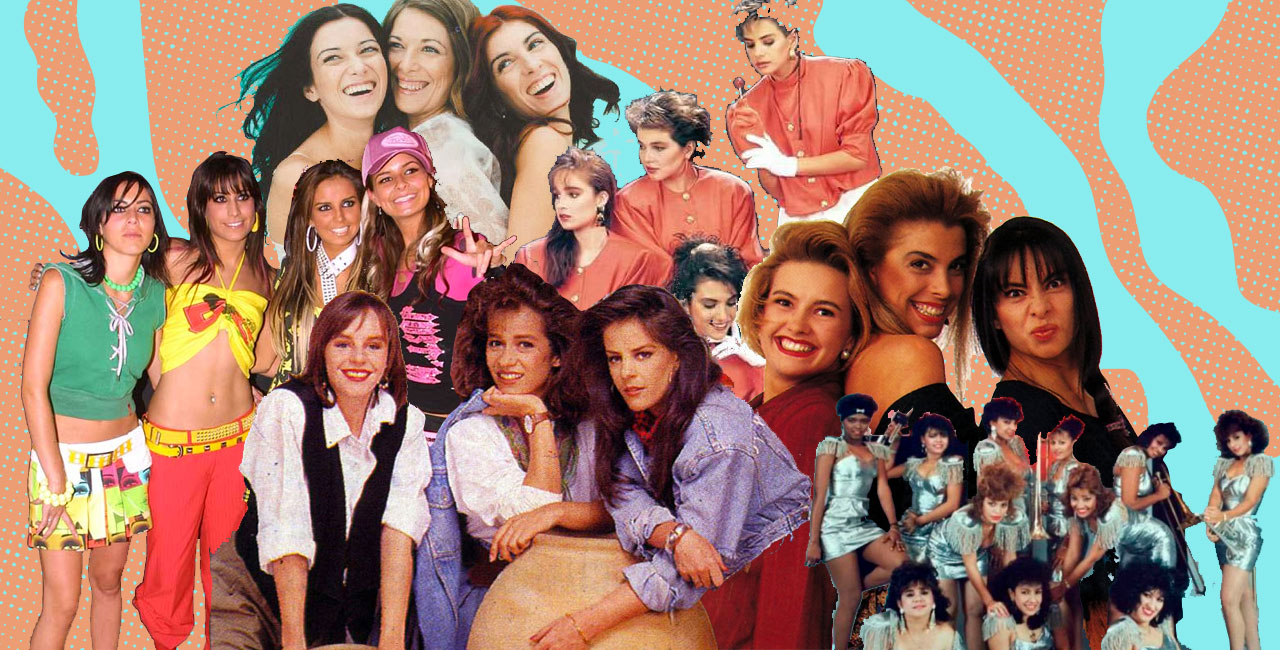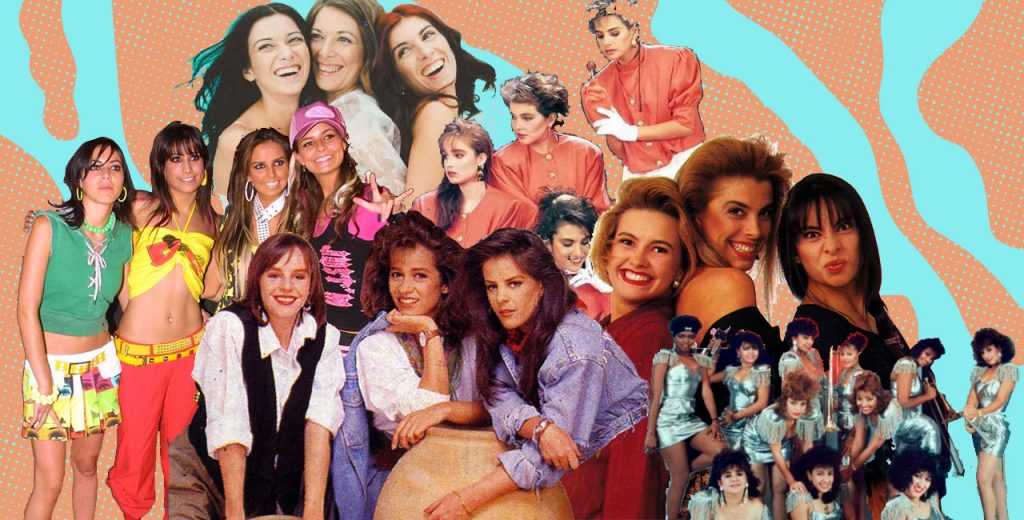Nowadays, nostalgia for pop hits of the past is something that makes up a big part of every music lover’s playlist. Women’s contributions to the genre are undeniable, and when it comes to recognition for their role in making music that defines so much of the cultural zeitgeist, they aren’t often treated with as much reverence as their male counterparts. So we thought it was the right time to revisit some of the most iconic girl groups from the 80s, 90s, and 2000s.
Girl groups have been an integral part of pop music since the late 50s and early 60s, but in Latin America, they didn’t quite take off until the 1980s. That era brought some of the earliest examples of girl groups in the region, although co-ed groups like Timbiriche and boy bands like Menudo were more common. A new wave of girl groups arose in the mid- to late 90s and extended into the mid-2000s, giving rise to new hits and a few legends we still listen to today. There are plenty of sonic similarities across these different eras; typically, these groups would perform energetic, highly choreographed dance tracks, although there were a few compelling exceptions that delved into merengue and full-blown ballads. We’ve included acts from all across Latin America (save for Las Ketchup, who are originally from Spain, but merited inclusion based on the impact of their hits in Spanish-speaking countries). As expected, the artists of Mexico’s massive 80s pop revolution play a huge part of this list.
With this retrospective, we look back at some of the best acts from yesteryear. Of course, this isn’t a comprehensive list, so feel free to let us know whom we missed. Sit back and get ready to dive into the choreography of some of the best pop music of the last 30 years.
1
Flans
The Mexican trio of Ilse, Mimí, and Ivonne caused a sensation when they exploded into the pop universe in the mid-80s, thanks to energetic and catchy songs like “Bazar” and “No Controles” (the latter was famously covered by Café Tacvba). They boasted a certain recklessness, making them electrifying but relatable performers.
2
Pandora
Often considered to be Flans’ rival, Pandora was in some ways the antithesis of its more pop-oriented, danceable peer. The Mexican outfit’s biggest hits were showstopping ballads like “Como Te Va Mi Amor.” Even its poppier numbers, like “Como Una Mariposa,” had a sense of control that closely resembled the work of more developed artists.
3
Jeans
During the peak years of 90s Mexican pop, Jeans were the biggest girl group around, thanks to unstoppable hits like “Pepe,” “Estoy Por El,” and “La Ilusión Del Primer Amor.” The four band members were some of the youngest in the scene, and their unpolished vocal delivery was what made them so charismatic.
4
Affair
Pharrell Williams had a vision in the early 2000s – a group that was like The Supremes, but made up of three Selenas instead. That’s how the idea for Affair was born. What would have been the biggest Latina R&B girl group in the U.S., Natasha Ramos, Vanessa Marquez, and Tiffany Villarreal only managed to record a handful of tracks, which never really made it out the gate. Still their fabled, short-lived existence and the handful of bops available on YouTube are enough to secure their place on this list.
5
Twist
Before Natalia Lafourcade became one of the biggest musicians in Latin America, collaborating with everybody from Los Macorinos to Miguel, she was part of a trio called Twist. Hasta La Raíz fans might be surprised to see Natalia dance and sing songs like “Late Mi Corazón,” but this sunny 90s throwback is undeniably catchy, and a testament to the times.
6
Fandango
Five teenage girls from Monterrey, Mexico came together in the mid-80s to give us one of the biggest hits of the era, the contagious “Autos, Moda y Rock and Roll.” While Fandango is not the most renowned name in pop music, the bulk of their catchy catalogue deserves to be discovered by a whole new generation.
7
Las Ketchup
For a band considered to be a one-hit wonder, Las Ketchup definitely have staying power. Though they are originally from Spain, Las Ketchup’s “Aserejé” was ubiquitous across Latin America in 2002. In their native Spain, they continued to top the charts and even represented the country in the Eurovision contest in 2016. The fact that the gibberish chorus of “Aserejé” actually makes sense is another important – if overlooked – part of their fame.
8
Las Chicas del Can
Las Chicas del Can, the first all-woman merengue group, was founded by Belkis Concepción in Santo Domingo, Dominican Republic. Wilfrido Vargas was involved early on, which helped boost their profile, but their take on tracks like “Juana La Cubana” are staples of the genre, thanks to their musicianship and charisma. They continue to be one of the merengue’s most essential outfits.
9
Click
Although not as well-known as Flans or Pandora, Click’s “Duri Duri” is one of the best songs of the 1980s Mexican pop landscape – a high-energy number with hooks for days. Click was founded by Tony Barrera, better known as Polymarchs, one of the most recognized sonideros in Mexico – a coveted and important co-sign.
10
T de Tila
Born from the Mexican edition of the reality show Popstars in 2002, T de Tila released only one album and a Matrix-inspired video for the single “Dejarte Ir” before breaking up. Their sole album boasts some real gems, and members Ana Brenda Contreras and María León (known as Mary Betty in TdT) would go on to star in telenovelas and front pop rock outfit Playa Limbo, respectively.




